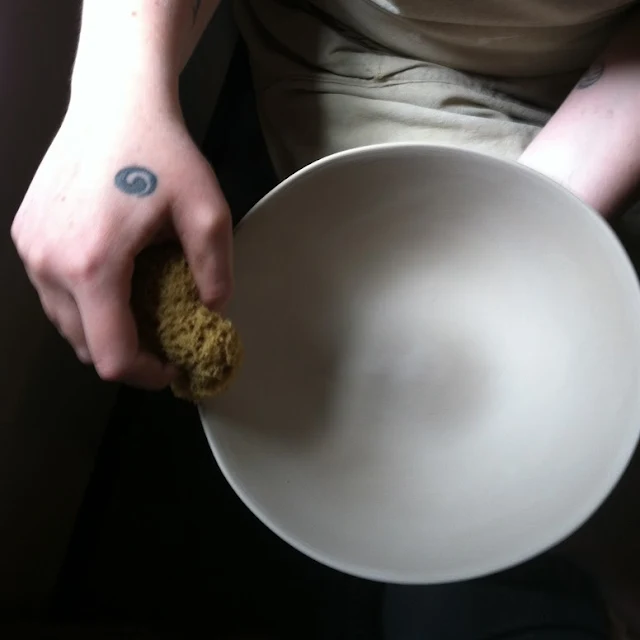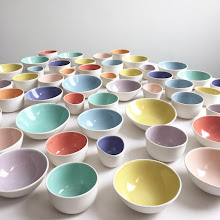first, the edge is trimmed with a surform.
second, the edge is smoothed with a sponge
this hand process is repeated on every piece, creating its unique personality.
day’s work: mixing porcelain slip
There are five ingredients in my porcelain slip: English porcelain, kaolin, feldspar, silica, and frit. The combination of the five yields a very smooth, ivory finish when fired to a high temperature (2300F). I mix 20 gallons of slip at a time, wrangling 50lb bags of clay. A good workout resulting in great arms!
My mixer is a very low-tech set up: a powerful motorized blade on top of a garbage can. It works perfectly.
One scoop at a time of dry material is added to a vortex of water and Darvan 7 (a suspension agent):
The mixture starts out lumpy:
and then gets ice-cream-smooth in a few hours:
The slip will thicken up over the next few days as clay particles absorb the water. A proper thickness is necessary for easy pouring and smooth casting. To thin out the thickened mixture, I add a 50/50 of water/Darvan 7 to get the correct consistency. After 10 years of mixing, I still learn something new about slip every time I mix a new batch. It's a finicky material to work with.
My mixer is a very low-tech set up: a powerful motorized blade on top of a garbage can. It works perfectly.
One scoop at a time of dry material is added to a vortex of water and Darvan 7 (a suspension agent):
The mixture starts out lumpy:
and then gets ice-cream-smooth in a few hours:
The slip will thicken up over the next few days as clay particles absorb the water. A proper thickness is necessary for easy pouring and smooth casting. To thin out the thickened mixture, I add a 50/50 of water/Darvan 7 to get the correct consistency. After 10 years of mixing, I still learn something new about slip every time I mix a new batch. It's a finicky material to work with.

Labels:
process
Subscribe to:
Comments (Atom)












